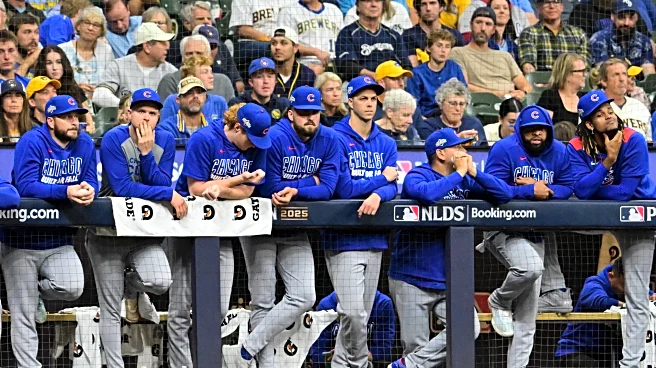What's Happening?
MLB Commissioner Rob Manfred is advocating for a centralized broadcasting platform that would allow fans to watch any game without blackouts, aiming for implementation by 2029. This initiative seeks to consolidate the broadcast rights of all 30 MLB teams into a single package, potentially increasing collective revenue by attracting interest from traditional and streaming outlets like Apple and Netflix. The proposal is designed to address the fragmented media environment and enhance accessibility for fans, but requires the approval of team owners, including those from high-revenue teams like the Dodgers.
Why It's Important?
The proposed centralized broadcasting platform could significantly impact the financial dynamics within MLB. Smaller market teams, like the Milwaukee Brewers, could benefit from increased revenue, while larger market teams, such as the Dodgers, might face reduced income from local television rights. This shift could lead to a more equitable distribution of media revenue across the league, potentially leveling the playing field. The initiative also aligns with broader trends in media consumption, where fans increasingly demand seamless access to content across platforms.
What's Next?
Negotiations are expected to begin next year, with the possibility of a lockout after the 2026 season if a consensus isn't reached. Key discussions will likely focus on revenue sharing, salary caps, and the potential buyout of existing regional sports networks. The outcome of these negotiations will determine the feasibility of the proposed platform and its impact on team finances. Stakeholders, including team owners and the players' union, will play crucial roles in shaping the future of MLB broadcasting.
Beyond the Headlines
The move towards a unified broadcast platform reflects broader shifts in the sports media landscape, where traditional models are increasingly challenged by digital streaming services. This development could set a precedent for other sports leagues facing similar challenges. Additionally, the proposal raises questions about the balance between maximizing revenue and maintaining competitive fairness, as well as the potential cultural impact of increased international broadcasting rights.











